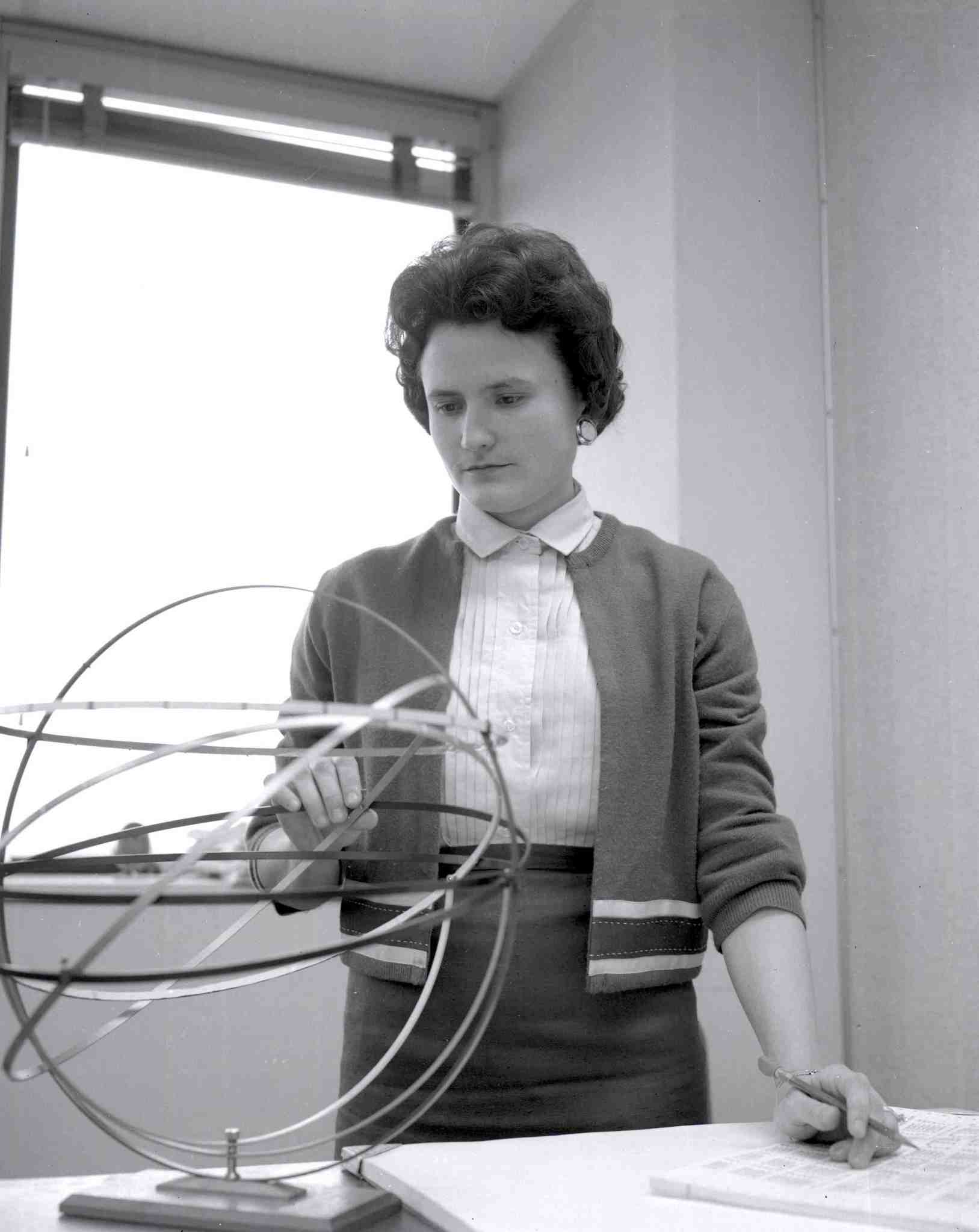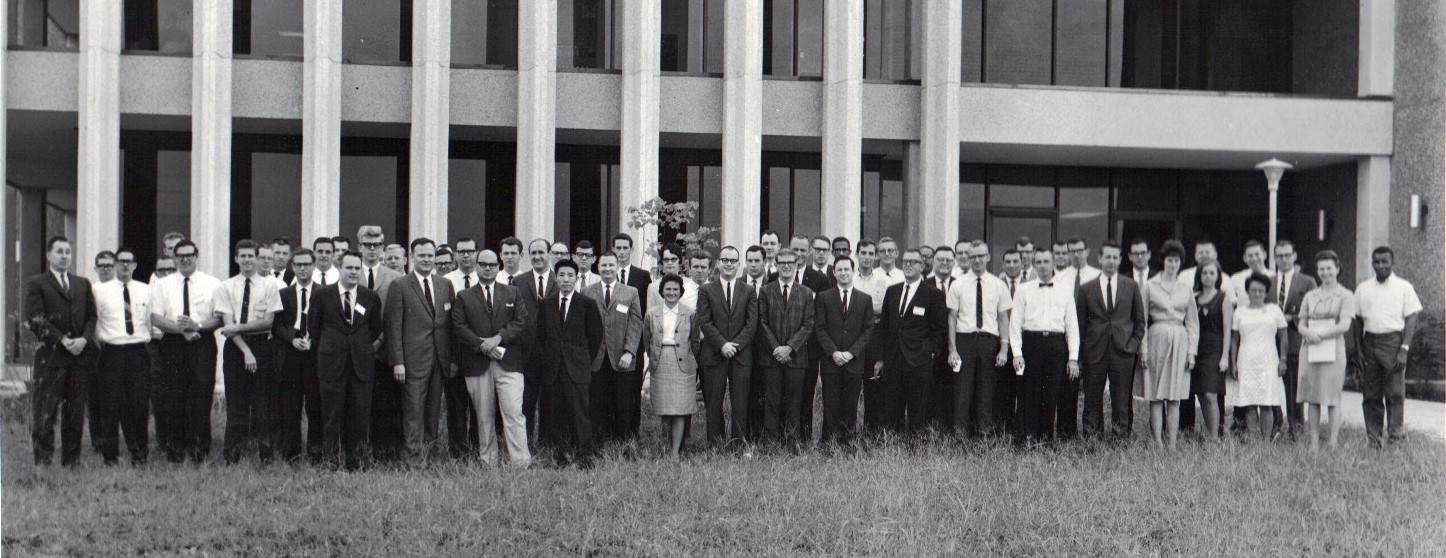Born in Troy, New York, Ethel Heinecke Bauer was raised in a talented family. Her mother, Grace Ethel Heinecke was a registered nurse while her father, Dr. Howard Elwin Heinecke, held doctoral degrees in both electrical engineering and physics from Rensselaer Polytechnic Institute. As a young child, Ethel’s family relocated with her father’s work for the government during World War II – first to Maxwell Field in Montgomery, Alabama. With the Army Air Corps opening of Eglin Field as a Bombing and Gunnery Test Site in October 1940, Dr. Heinecke again moved the family to Valparaiso, Florida and began his lifelong career at what today is known as Eglin Air Force Base.
Over this period, Dr. Heinecke worked to perfect the Norden Bombsight – an instrument developed by Swiss-born engineer Carl L. Norden and designed to provide precise bombing capability during aerial bombardment. Dr. Heinecke’s major insight in this development was in understanding how preparing bombing tables for targets at sea level introduced systematic errors when using those tables for bombardier training at the higher altitudes bases in the United States. Using this major insight in the midst of World War II, ballistics researchers were able to develop a new theoretical basis for the computation of new correction tables. These calculations proved rather critical during the bombings in support of the invasion of occupied France and the deployment of atomic bombs at Hiroshima and Nagasaki.
Whether he knew it at the time, Dr. Heinecke’s work would have a strong bearing on his daughter’s future profession. However, Ethel related in a 1965 interview that far from encouraging her to follow in his intellectual footsteps, her father had advised her to bow to the inevitable in a world with incredible limitations for women and instead “get married, settle down, and be a good housewife.” The young Ethel had other ideas.
In Montgomery, Alabama, Ethel attended Huntington College and earned bachelor’s degrees in both mathematics and business administration. She spent the period between semesters back at Eglin Air Force Base, moving through positions as stenographer, freight traffic clerk, a mathematical computer aid and, finally, as an engineering aid. In October 1957, the launch of Sputnik captivated Ethel’s attention and convinced her to change her major to mathematics. It was while working at Eglin during the summer of 1960 that she met Bruce Bauer.
Later, while attending Vanderbilt University in Nashville, Tennessee on a Ford Foundation scholarship, Ethel became intrigued by opportunities working with the space program just down the road in Huntsville, Alabama at NASA’s Marshall Space Flight Center. In February 1961, she accepted an offer to become a mathematician in the Aero-Astrodynamics Laboratory at NASA’s Marshall Space Flight Center. However, in September 1961, Ethel returned to Florida to marry Bruce Bauer, an electrical engineer with the General Electric (GE) Company, who was on assignment to Eglin Air Force Base.
After her marriage, Ethel returned to Eglin where she continued her work as a mathematician developing flight paths and dispersion analyses for military rockets including a classified flight test, FIREFLY ETHEL, which was named in her honor. After an eighteen-month period in Florida, the couple returned to Huntsville in March 1963 with both taking positions in the Apollo program – Ethel with Marshall and Bruce with GE.
Back at Marshall, Ethel started work as an aerospace engineer in the Applied Guidance and Flight Mechanics Branch of the Aero-Astrodynamics Laboratory where she was principally engaged with planning lunar trajectories for the Apollo program including the ‘free return’ trajectory which allowed for a safe return in the event of a systems failure – a trajectory used on Apollo 13, as well as the first three Apollo flights to the Moon. Ethel also spent time in the Mission Analysis Section developing “targeting conditions” which would cause the on-board computer to cut off thrust in the Saturn V S-IVB stage.
In May 1971, Ethel served as the lead developer of a mission analysis simulation technique designed to evaluate and optimize the Earth Resources Experiment Package (EREP) program for Skylab. Her work on the program sought a better understanding of the factors influencing the available opportunities for Earth observations including orbital parameters, solar lighting at the target, and general system limitations. In the technical report, “An Evaluation of Earth Resources Observation Opportunities from an Orbiting Satellite,” Ethel and co-author B.S. Perrine Jr. offered an optimization program for orbital inclination, launch time, and launch date.
In June 1971, Marshall center director Dr. Eberhard Rees nominated Ethel for the Federal Woman’s Award. In support of the nomination, Rees noted that she had “helped pave the way for the first lunar orbit by the Apollo 8 crew” as well as the Apollo 11 mission and the Apollo 13 crew following that mission’s accident. Additionally, Rees credited her with the development of targeting procedures for Apollo crewed lunar missions, outlining procedures for guiding the S-IVB stage, helping to develop the ‘sling shot’ method which disposed of the spent S-IVB stage, and later modification of that method for guiding the spent S-IVB stage to the Moon for additional experiments.
In 1974, Ethel transferred from Marshall to NASA’s Ames Research Center in California, where she spent the next nineteen years working in the Airborne Missions and Applications Division of the Astronautics Office, in the Earth Resources Observation programs on the development of ground communications. In 1987, she worked on the Comet Nucleus Penetrator Project (CRAF), then became deputy chief of the System Development branch of the Space Exploration Projects Office from 1989 to 1992, then, in 1992, became chief engineer for the Space Station Biological Research Facility Project. During that time, Ethel continued to make significant contributions to the space program and mentoring many of those who are now leaders in the field.
Ethel retired on January 31, 1993 after thirty-two years of federal service. Over the course of her long career, Ethel made instrumental contributions to several NASA programs ranging from humanity’s first steps on the lunar surface to using satellite data to increase crop yields in agriculture, along with technology transfers in climate, and communications. On the occasion of her retirement from Ames, then center director Dale Compton wrote to Ethel remarking how during her career she had indeed served as a “role model for young women engineers as one of NASA first women in both engineering and management positions.” Ethel’s was certainly a career spent breaking barriers and bringing others along with her.




























